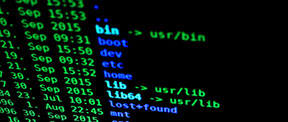**Exploring the Hidden Gems of Linux Commands: locate**
In the vast world of Linux commands, there are countless hidden gems that can make your life easier and more productive. One such command is locate, a powerful tool for finding files and directories on your system. While it may not be as well-known as commands like tree, find, or ls, locate offers a unique set of features that make it a valuable addition to any Linux user’s toolkit.
**What is locate?**
Locate is a command-line tool designed to quickly search for files and directories based on their names. It works by maintaining a database of file locations, which is updated regularly by the updatedb command. This database is stored in the /var/lib/mlocate directory.
**Advantages of using locate:**
* **Speed:** Locate is incredibly fast, as it searches the database of file locations rather than scanning the entire file system. This makes it ideal for finding files that you know exist but don’t remember the exact location.
* **Convenience:** Locate’s simple syntax makes it easy to use, even for beginners. You can simply type locate followed by the name of the file or directory you’re searching for.
* **Wildcard support:** Locate supports wildcard characters, such as * and ?, allowing you to search for files with specific patterns in their names.
* **Recursive search:** Locate can recursively search subdirectories, making it easy to find files buried deep within your file system.
**Example uses of locate:**
* **Finding a specific file:** If you know the name of a file but not its location, you can use locate to quickly find it. For example, to find all files named “myfile” on your system, you would run the following command:
“`
locate myfile
“`
* **Finding files of a specific type:** You can also use locate to find files of a specific type. For example, to find all JPEG image files on your system, you would run the following command:
“`
locate *.jpg
“`
* **Finding files in a specific directory:** You can also use locate to search for files within a specific directory. For example, to find all files named “myfile” in the /tmp directory, you would run the following command:
“`
locate myfile /tmp
“`
* **Finding files recursively:** To search for files recursively within a directory and its subdirectories, you can use the -r option. For example, to find all files named “myfile” in the /tmp directory and its subdirectories, you would run the following command:
“`
locate -r myfile /tmp
“`
**Conclusion:**
Locate is a powerful and versatile command that can save you time and effort when searching for files and directories on your Linux system. Its speed, convenience, and support for wildcard characters and recursive searches make it an indispensable tool for any Linux user.
**Additional tips:**
* To update the locate database, run the updatedb command. It is recommended to run this command regularly to keep the database up-to-date.
* You can also use the locate command to find files by their contents using the -i option. For example, to find all files containing the word “example”, you would run the following command:
“`
locate -i example
“`
* Locate can also be used to find files by their size, modification time, and other attributes. Use the locate –help command to learn more about its usage and options.
